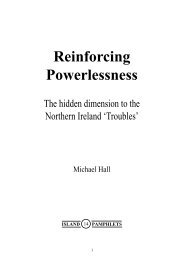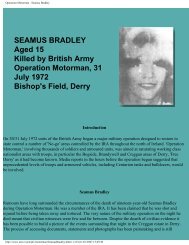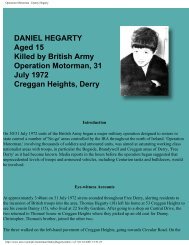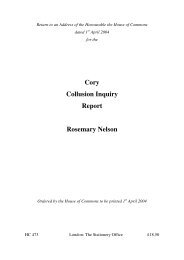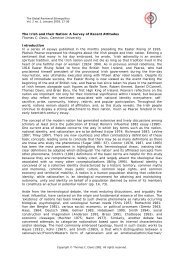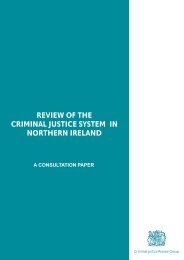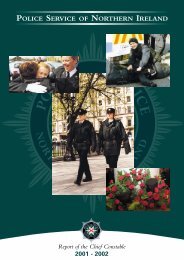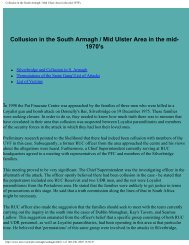7 POLICING WITH THE COMMUNITY - CAIN
7 POLICING WITH THE COMMUNITY - CAIN
7 POLICING WITH THE COMMUNITY - CAIN
You also want an ePaper? Increase the reach of your titles
YUMPU automatically turns print PDFs into web optimized ePapers that Google loves.
2 – <strong>POLICING</strong> IN PARTNERSHIP: <strong>THE</strong> CLERGYA good example of successful partnership policing is the role of the clergy in some American cities.Santa Ana police, in Southern California, told us they could not have succeeded in reducing crime anddisorder in the most difficult neighbourhoods in their jurisdiction without active engagement by theCatholic Church.In Boston, a group of black ministers have formed a coalition to help bring peace to violentneighbourhoods, with a particular emphasis on youth. The clergy work with gang members, youthsinvolved in drug trafficking, and victims of domestic violence. They offer advice and help overeducation and employment, healthcare and counselling, and over the past few years they havedeveloped with the police a constructive and mutually-reinforcing partnership in place of what wasonce a detached and sometimes hostile relationship. The result is safer neighbourhoods, and moreblack and Latino youth seeking to join the police (see also Chapter 15).Partnership7.4 The arrangements we have proposed in the preceding chapter on accountability providemechanisms whereby the community can express its concerns and priorities to the police and thepolice can explain and report on their conduct and performance. We have also encouraged closecooperation between these accountability mechanisms and other agencies involved in aspects ofcommunity safety. But partnership between the police and the community goes well beyondformal arrangements of this sort, and beyond the less formal Community and Police LiaisonCommittees which may exist at various local levels. Partnership is a matter of policing style, but itis also an attitude of mind, both for police officers and for the public. It is at least as much a matterof philosophy as it is one of method, and it amounts to a profound shift in police thinking andcommunity thinking.7.5 The present policing style of the RUC has been greatly distorted by the security situation, to thefrustration of both police and public. Submissions from many serving and retired officersregretted the difficulty of providing a proper community policing service with the constraintsimposed on them as a result of the threats to their security – fortified police stations, armouredvehicles, firearms, body armour and so on. Many members of the public called for more beatpolicing and for dedicated neighbourhood police officers functioning as part of the community.7.6 We do not believe that the absence of community policing in many parts of Northern Ireland canbe entirely justified as a consequence of the security situation, although we do accept that itexplains a great deal. We have been impressed by the community policing service that some policeofficers have managed to provide, even in difficult areas, in spite of continuing security threats.One example is the Markets area of Belfast (see box 3), where a number of police officers have losttheir lives over the years, most recently Constable Johnston Beacom in 1994, and yet SergeantStevie Jones and his team, patrolling on foot, have managed to build up a community policingpresence which won Sergeant Jones an award as the United Kingdom’s Community Police Officerof the Year in December 1998. We are convinced, from visiting the area ourselves and speaking toresidents, police and community groups, that the success of the community police team there isattributable to their attitude towards the local community, to their patient hard work over a periodof years, and to the response of the community to this style of policing. We believe that a similar41





